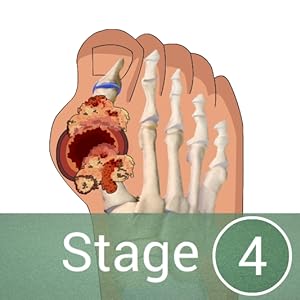Individuals with gout and certain subsets of patients diagnosed with other rheumatic diseases during hospitalization were more likely to be hospitalized for cardiovascular disease, according to study findings published in BMC Rheumatology. Rates of cardiovascular hospitalization varied by race and depending on the specific rheumatic disease.
Rheumatic diseases increase the risk for cardiovascular disease, with disparities evident among the different rheumatic diseases. Historically, Indigenous North American populations have low rates of diabetes and cardiovascular disease. However, there is a rising prevalence of prediabetes and persistently high stroke rates.

Investigators conducted a cohort study utilizing data from the Alaska Inpatient
Database of the Alaska Health Facilities Data Reporting Program from 2015 to 2018. They examined hospitalizations related to cardiovascular disease in Alaska, comparing rates among patients with and without a rheumatic disease diagnosis. They further aimed to evaluate racial inequalities, particularly among Alaska Native and American Indian communities.
Eligible participants included Alaska residents aged 18 years or older who were hospitalized for any reason from 2015 to 2018. Patients who were diagnosed with rheumatic diseases during hospitalization were compared against those without such diagnoses. Patients with rheumatic diseases were categorized into 3 groups: those with only osteoarthritis (OA), those with gout with or without other rheumatic diseases, and those with any other rheumatic disease. Cardiovascular disease hospitalizations were identified using medical record codes.
Our finding that the association of rheumatic disease diagnosis and cardiovascular disease hospitalization varies by race is novel.
Overall, 10,516 patients with OA, 2880 with gout, 2436 with other rheumatic diseases, and 61,896 with no rheumatic diseases were included in the analysis. Cardiovascular disease hospitalizations were higher among patients with gout (30.2%) and other rheumatic diseases (14%), compared against those without rheumatic disease (12.7%). This trend persisted across all age groups. Patients with OA were least likely to be hospitalized for cardiovascular diseases (10.2%).
Men with or without rheumatic diseases consistently had higher rates of cardiovascular disease hospitalization than women. Among those without rheumatic diseases, Alaska Native and American Indian patients had lower rates than White patients or those of other races. Increased rates of cardiovascular disease hospitalization were noted across all races for patients with gout; however, rates were only increased among Alaska Native and American Indian individuals with other rheumatic diseases.
Patients with gout or OA had longer lengths of stay when hospitalized for cardiovascular diseases, but there was no significant difference in in-hospital mortality when compared against those without rheumatic diseases.
Patients with gout (odds ratio [OR], 2.98) and vasculitis (OR, 2.58) had the highest odds of cardiovascular disease hospitalization, while patients with OA were associated with lower odds (OR, 0.88).
Racial disparities were evident across various rheumatic disease categories, with the exception of patients with rheumatoid arthritis or systemic lupus erythematosus/mixed connective tissue disease. Among those without rheumatic diseases, Alaska Native and American Indian individuals exhibited the lowest rates of cardiovascular disease hospitalization. However, rates of cardiovascular hospitalization for Alaska Native and American Indian patients with OA or gout fell in between those of White patients (the lowest) and individuals of other races (the highest).
Study limitations included potential selection bias towards patients with more severe rheumatic disease, lack of outpatient data, limited racial and gender categories, heterogeneity in grouped diseases, and the inability to establish causation.
“Our finding that the association of rheumatic disease diagnosis and cardiovascular disease hospitalization varies by race is novel,” study authors concluded.
Disclosure: This research was supported by the Accelerating Medicines Partnership in
Rheumatoid Arthritis and Lupus Network. Some study authors declared affiliations with biotech, pharmaceutical, and/or device companies. Please see the original reference for a full list of disclosures.
Ferucci ED, Holck P. An assessment of cardiovascular disease hospitalizations and disparities by race in patients with rheumatic disease hospitalizations in Alaska, 2015-2018. BMC Rheumatol. Published online February 18, 2024. doi:10.1186/s41927-024-00377-8





Leave a Reply